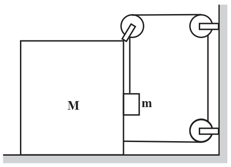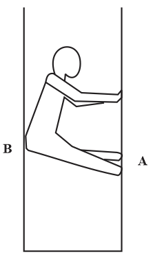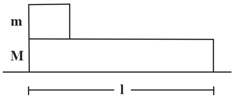H C Verma Solutions for Chapter: Friction, Exercise 4: EXERCISES
H C Verma Physics Solutions for Exercise - H C Verma Solutions for Chapter: Friction, Exercise 4: EXERCISES
Attempt the practice questions on Chapter 6: Friction, Exercise 4: EXERCISES with hints and solutions to strengthen your understanding. CONCEPTS OF PHYSICS [VOLUME 1] solutions are prepared by Experienced Embibe Experts.
Questions from H C Verma Solutions for Chapter: Friction, Exercise 4: EXERCISES with Hints & Solutions
The friction coefficient between the two blocks shown in the figure is but the floor is smooth.
(a) What maximum horizontal force can be applied without disturbing the equilibrium of the system?
(b) Suppose the horizontal force applied is double the value found in part (a). Find the accelerations of the two masses.

The friction coefficient between the two blocks shown in the figure is but the floor is smooth. Suppose the entire system is kept inside an elevator which is coming down with an acceleration of
(a) What maximum horizontal force can be applied without disturbing the equilibrium of the system?
(b) Suppose the horizontal force applied is double the value found in part (a). Find the accelerations of the two masses.

Consider the situation shown in the figure. Suppose a small electric field exists in the space in the vertically upward direction and the upper block carries a positive charge on its top surface. The friction coefficient between the two blocks is but the floor is smooth. What maximum horizontal force can be applied without disturbing the equilibrium? [Hint: The force on a charge by the electric field is in the direction of]

A block of mass slips on a rough horizontal table under the action of a horizontal force applied to it. The coefficient of friction between the block and the table is . The table does not move on the floor. Find the total frictional force applied by the floor on the legs of the table. Do you need the friction coefficient between the table and the floor or the mass of the table?
Find the acceleration of the block of mass marked in the figure.
The coefficient of friction between the two blocks is and that of between the bigger block and the ground is , respectively.

A block of mass is pushed against a rough vertical wall with a force , the coefficient of static friction being . An other horizontal force of , is applied on the block in a direction parallel to the wall. Will the block move? If yes, in which direction will the block move? If no, then find the frictional force exerted by the wall on the block.
A person is managing to be at rest between two vertical walls by pressing one wall by his hands and feet and the other wall by his back.
Assume that the friction coefficient between his body and the walls is and that the limiting friction acts at all the contacts.
Show that the person pushes the two walls with an equal force.
Find the normal force exerted by either walls on the person.
(Take )

A small block of mass is kept at the left end of a larger block of mass and length . The system can slide on a horizontal road. The system is started towards the right with an initial velocity . The friction coefficient between the road and the bigger block is and that of between the block is . Find the time elapsed before the smaller block separates from the bigger block.

